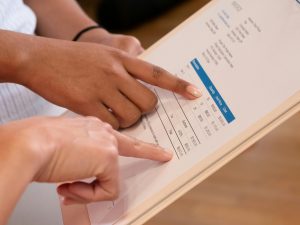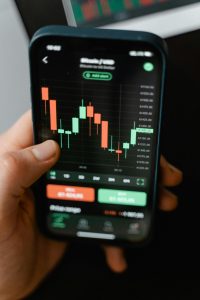Are you worried that the bank statement you received might not be genuine? You have good reason to be cautious.
It’s a common concern, especially in today’s digital age. Let me ease your mind with practical, foolproof strategies. We’ll explore tools and tricks used by professionals to distinguish genuine documents from forgeries. Get ready to become a verification pro before using your ordered bank statement to apply for anything.
In today's digital age, the accuracy and authenticity of financial documents are paramount. Bank statements, in particular, play a crucial role in various aspects of our lives, from securing loans to verifying income. However, the rise of sophisticated forgery techniques has made it increasingly challenging to distinguish genuine statements from fake ones.
The risks associated with fake bank statements are significant. They can lead to financial fraud, identity theft, and severe legal consequences. For businesses, accepting fraudulent statements can result in substantial financial losses and damage to reputation. For individuals, using or falling victim to fake statements can lead to denied loans, legal troubles, and compromised personal information.
Given these risks, it’s essential to know how to spot fake bank statements. This blog post will provide you with three proven tips to help you detect fraudulent bank statements and protect yourself from potential financial harm.
Tip 1: Check the Formatting
Verify the bank’s logo and official formatting

One of the first steps in detecting a fake bank statement is to examine its overall appearance. Legitimate banks invest considerable resources in maintaining a consistent and professional look for their documents. Pay close attention to the bank’s logo, color scheme, and general layout. If something seems off or different from what you’re used to seeing, it could be a red flag.
I once encountered a situation where a client provided a bank statement with a slightly distorted logo. Upon closer inspection, it became clear that the document was a forgery. This experience taught me the importance of familiarizing oneself with the authentic formatting of various banks’ statements.
Look for inconsistencies in font type and size
Forgers often struggle to replicate the exact font used in official bank statements. Examine the document carefully for any variations in font type or size throughout the statement. Legitimate banks typically use consistent fonts across their documents.
Examine alignment and spacing of the text and numbers
Professional bank statements have precise alignment and spacing. Check if the columns are properly aligned and if there’s consistent spacing between lines and sections. Irregular spacing or misaligned text can be indicators of tampering or forgery.
Tip 2: Analyze Transactions
Scrutinize transaction dates and values for regularity

When examining a bank statement, pay close attention to the transaction dates and values. Look for any patterns that seem too regular or perfect. For example, if all transactions occur on the same day of the week or if there are too many round numbers, it might indicate fabrication.
Check for rounded numbers and repetitive transactions
Genuine bank statements usually show a mix of precise and rounded transaction amounts. An abundance of transactions with rounded numbers (e.g., $100.00, $500.00) could be a sign of forgery. Additionally, be wary of repetitive transactions that occur at regular intervals with the same amount.
Importance of comparing bank statements with actual receipts
One effective way to verify the authenticity of a bank statement is to cross-reference it with actual receipts or other financial records. This process can help identify any discrepancies between reported transactions and real-world financial activities.
Tip 3: Use Verification Tools
List of digital tools and software for detecting forgeries

Several digital tools and software programs can assist in detecting forged documents. Some popular options include:
- Proofofstatement software
- Adobe Acrobat Pro DC
- FotoForensics
- Belkasoft Evidence Center
- GIMP (GNU Image Manipulation Program)
How to use these tools to verify the authenticity of statements
These tools often provide features like metadata analysis, error level analysis, and digital signature verification. For example, Proofofstate software can check if a PDF has been altered since it was digitally signed. FotoForensics can detect image manipulation through error-level analysis.
Legal implications of using forged documents
It’s crucial to understand that using forged bank statements is a serious criminal offense. The consequences can include hefty fines, imprisonment, and a permanent criminal record. Moreover, it can lead to long-term damage to one’s financial credibility and personal reputation.
Conclusion
Detecting fake bank statements requires vigilance and attention to detail. By carefully examining the formatting, analyzing transactions, and utilizing verification tools, you can significantly reduce the risk of falling victim to financial fraud.
Always remember to verify financial documents, especially when they’re being used for important decisions or transactions. Your diligence in these matters can protect you from potentially devastating financial and legal consequences.
Call to Action
Reach out For more information on how to get legit financial proof of income documents like bank statements, pay stubs, tax returns, and bills for any verification purposes. If you have experiences or additional tips for detecting forgeries, we encourage you to share them in the comments section below. Your insights could help others protect themselves from financial fraud.





